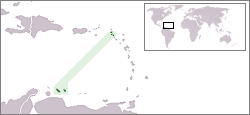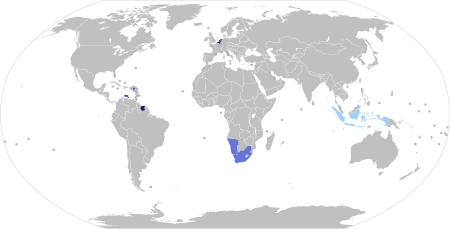Flemish dialect
Flemish Dutch, or simply Flemish, is the regional variety of the Dutch language spoken in Flanders. Dutch was originally spoken in the area at the mouth of the Rhine, Scheldt and Meuse rivers which roughly covered the present-day Netherlands, northern Belgium, northern France (Dunkirk, Calais) and a small part of northwestern Germany.
The Eighty Years' War (1568-1648) led to the division of the Seventeen Provinces into the United Provinces to the north and the Southern Netherlands to the south. This political separation between the Dutch-speaking provinces caused the language to undergo an evolution with some singularities in each area.
The hegemony of the provinces of Flanders in the south and Holland in the north gave rise to the use of the term Flemish in a somewhat informal way to distinguish the peculiarities of the south and Dutch for the northern ones, although both must be considered two of the main dialects of Dutch. In addition, each city, town and village has its own dialect, almost always in progressive decline. The set of all the dialects spoken in the Flanders region would be what is usually called Flemish language .
Use of the term flamenco
In the early years of Flemish autonomy within Belgium, Flemish (vlaams) was used to refer to the Dutch language spoken in this region, but it was dropped soon after completely this word of the legislation to use only the term Dutch (nederlands). The term Flemish is still in use today to refer to the set of Flemish dialects.
Due to the history of the Netherlands and Belgium, as well as the Dutch language, the names that other peoples have chosen to refer to it vary more than for other languages. In Spanish, Dutch is usually only used in academic or official texts, Dutch is the name given to it in informal conversations and flamenco is used to refer to to the Flemish language. All three terms usually refer to the same language, although the terms Dutch and Flemish are also used to specify the dialect.
Situation of Dutch in Belgium
Dutch is an official language in Belgium, specifically in the Flanders region and in the Brussels-Capital Region, where it is co-official with French, although it is a minority language. The other official languages of Belgium are French and German.
According to the latest census, Belgians' mother tongues are Dutch (60%) French (37%) and German (0.7%). "Perfect" bilingualism is exercised by 58% of the population, although it is estimated that 80% of Flemish people speak good French and 30% of Walloons speak good Dutch.[citation required]
Historically, the domination of other powers (Spain, Austria, France) over Flanders caused Dutch to be considered a language of the lower class and to evolve without references or teaching in schools. As in practically all of Europe, in the 19th century the nobility and the gentry spoke French. When Belgium was created in 1830 after a revolution, the ruling classes chose French as the country's official language, assuming it was a more educated and advanced language. This decision will cause a progressive Frenchification of Brussels and later a linguistic conflict still pending to be resolved.
Initially Flanders, like the rest of the country, had French as its official language. It was not until 1898 that the Dutch language was legally equated with French in Belgium, although for another thirty years Flanders was officially considered bilingual. new situation. Still in 1968 some universities maintained a certain predominance of French; The tension caused that, at that time of student revolts, in Belgium the protests focused on demanding the closure of the French-speaking sections of the universities in Flemish territory.
Dialect distribution map
There are actually many dialects of Dutch, both in the Netherlands and Belgium, although the oddities found in Flanders are more striking. A quick classification that is usually made is to reduce its dialects to two, Dutch in the north and Flemish in the south, this being the classification included in the RAE Dictionary. In a more detailed classification we would have eight main variants that would actually be more local dialect groups.
The maps show the distribution of Dutch dialects, ignoring some peculiarities that occur in some cities. Low Saxon Dutch, Zeelandic and the Limburgish language are also shown as dialects, although it is debatable whether this is a dialect or a separate language, since in West Germanic languages it is very problematic to establish a clear border between dialect and language.
A | South-West Group |
B | North-West Group (Dutch) |
C | North-Eastern Group (under Dutch sajón) |
D | Central-septentarional Group |
E | Central-central |
F | South-Eastern Group |
G | Suriname |
H | Netherlands Antilles and Aruba |
Flemish is the general name for the group of southern dialects, marked with the numbers 1, 22, 23 and 24*.
- ♪ It has already been commented that considering the language limburgués as a Dutch dialect is debatable.
Features of Dutch
Dutch belongs to the Germanic Indo-European family. It is the mother tongue of some 22.5 million people in the world.[citation needed] It has a syllabic structure that allows quite complex consonant groups, it stands out for the use of velar fricatives and the tendency to form long compound nouns.
Spelling
Its spelling allows the correspondence between how a word is written and how it is read to be immediate. Dutch distinguishes between short and long vowels, hence sometimes doubled vowels or consonants appear as in paard (horse), knoflook (garlic), kapper (barber) or koffie (coffee) to mark vowel length.
Grammar
Dutch has three genders: masculine, feminine, and neuter. However, given the few grammatical differences between the masculine and the feminine, in practice they seem to be reduced to just two: common and neuter. In this way, words are often classified according to the article that accompanies them into words with het and words with de.
The adjective, when modifying a noun, must always precede it. In this case, the ending -e is usually added: De kat op de boom is zwart (The cat in the tree is black); De zwarte kat is op de boom (The black cat is in the tree).
Sentence structure in Dutch is basically Subject Object Verb (SOV) — that is, the subject begins the sentence and the verbs end it — except that the main verb (the one that agrees with the subject) it comes before the second position, which means that in simple sentences with a single verb the structure is similar to SVO Spanish: Ik heb een mooie hond (I have a nice dog). In more complex or subordinate sentences, only one verb remains in second position and the others move to the end of the sentence: Ik wil morgen een boek gaan kopen (I want to go buy a book tomorrow).
Regulation
The body that regulates the language is the Nederlandse Taalunie (Dutch Language Union), created in 1986 with the aim of setting the common linguistic standard for the Netherlands and Belgium, and to which Suriname joined in 2004. The Nederlandse Taalunie is an international institution similar to what in Spanish is the Association of Academies of the Spanish Language.
The official standard is known as Standaardnederlands (Standard Dutch), although it is also called Algemeen Nederlands or by the initials AN (Dutch general).
Neighboring languages
Dutch shares many features with German, but with a less complicated morphology caused by deflection. The Dutch consonantal system, on the other hand, has more in common with the Anglo-Frisian and Scandinavian languages. If we consider the non-standard varieties of these languages, we would have a dialect complex between the different dialects of Dutch, German and Frisian.
Dutch is closely linked to Afrikaans, a Germanic language derived from Dutch and spoken mainly in South Africa and Namibia. Afrikaans and Dutch have different dictionaries and rules, but are mutually intelligible.
Contenido relacionado
Spanglish
Venezuelan Spanish
Caddoan languages
Tupi languages
Germanism



